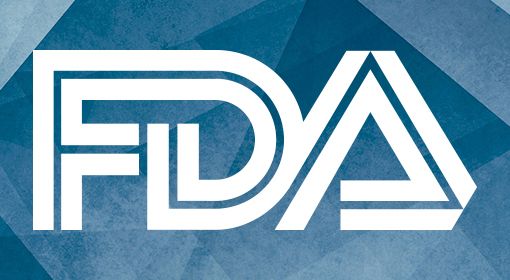FDA Grants Priority Review to Olaparib Plus Bevacizumab for Frontline Maintenance in Ovarian Cancer
The FDA has granted a priority review for the combination of olaparib and bevacizumab for the maintenance treatment of patients with advanced ovarian cancer.
FDA Grants Priority Review to Olaparib Plus Bevacizumab for Frontline Maintenance in Ovarian Cancer

The FDA has granted a priority review designation to a supplemental new drug application (sNDA) for the combination of olaparib (Lynparza) and bevacizumab (Avastin) for the maintenance treatment of patients with advanced ovarian cancer who are in complete or partial response (PR) to first-line platinum-based chemotherapy with bevacizumab.1
The designation is based on results from the pivotal phase III PAOLA-1 trial, in which the combination led to an investigator-assessed 41% reduction in the risk of disease progression or death compared with bevacizumab alone in this patient population (HR, 0.59; 95% CI, 0.49-0.72; P <.001).2 Additionally, after a median follow-up of 22.9 months, the median progression-free survival (PFS) was 22.1 months and 16.6 months with the combination and bevacizumab alone, respectively.
Under the Prescription Drug User Fee Act, the FDA is expected to make a decision on the sNDA in the second quarter of 2020.
In the double-blind, placebo-controlled, phase III PAOLA-1 trial, patients with newly diagnosed, advanced, FIGO stage III to IV, high-grade, serous or endometroid ovarian, fallopian tube, or peritoneal cancer who had a complete response (CR) or PR to frontline platinum-based chemotherapy and bevacizumab, regardless of genetic biomarker status or their outcome to prior surgery, were randomized 2:1 to receive olaparib in combination with bevacizumab (n = 537) or bevacizumab with placebo (n = 269) as a first-line maintenance treatment. Bevacizumab was administered at 15 mg/kg every 3 weeks on day 1; in the experimental arm, olaparib was given at 300 mg twice daily.
Patients were enrolled regardless of the type or extent of surgery (upfront or interval). The median age was 60.5 years, and all patients had an ECOG performance status of 0 or 1. A total of 95.5% patients had serous histology.
The primary endpoint was investigator-assessed PFS; secondary endpoints included PFS2, overall survival, time until first subsequent therapy or death, and global health status—quality of life dimension of the European Organization for Research and Treatment of Cancer Quality of Life Questionnaire.
Results also showed that the benefit with olaparib was most pronounced in patients with tumors positive for homologous-recombination deficiency (HRD), including tumors that had BRCA mutations (HR, 0.33; 95% CI, 0.25-0.45). In this subgroup, the median PFS was 37.2 months and 17.7 months with the olaparib combination and bevacizumab alone, respectively.
In those who had HRD-positive tumors without BRCA mutations, the median PFS was 28.1 months with olaparib/bevacizumab and 16.6 months with bevacizumab alone, respectively (HR, 0.43; 95% CI, 0.28-0.66).
Regarding safety, the most common adverse events (AEs) occurring in ≥20% of patients in the combination arm versus the bevacizumab-alone arm were fatigue (53% vs 32%, respectively), nausea (53% vs 22%), hypertension (46% vs 60%), anemia (41% vs 10%), lymphopenia (24% vs 9%), vomiting (22% vs 11%), and arthralgia (22% vs 24%).
Grade ≥3 AEs were reported in 57% of patients who received the addition of olaparib to bevacizumab and occurred in 51% of patients on bevacizumab alone. These AEs included hypertension (19% with olaparib/bevacizumab vs 30% with bevacizumab alone), anemia (17% vs <1%, respectively), lymphopenia (7% vs 1%), fatigue (5% vs 1%), neutropenia (6% vs 3%), nausea (2% vs 1%), diarrhea (both 2%), leukopenia (2% vs 1%), vomiting (1% vs 2%), and abdominal pain (1% vs 2%).
AEs that led to dose interruption occurred in 54% of patients on olaparib plus bevacizumab compared with 24% of patients on single-agent bevacizumab. Dose reductions occurred in 41% and 7% of patients on olaparib/bevacizumab and bevacizumab alone, respectively. Treatment discontinuations occurred in 20% of patients on the combination compared with 6% of those on bevacizumab alone.
In December 2018, the FDA approved olaparib as a maintenance treatment for patients with deleterious or suspected deleterious germline or somatic BRCA-mutated advanced epithelial ovarian, fallopian tube, or primary peritoneal cancer who are in CR or PR to frontline platinum-based chemotherapy, as approved by an FDA-approved companion diagnostic assay.
This approval is based on findings from the phase III SOLO-1 trial, in which olaparib reduced the risk of disease progression or death by 70% in patients with BRCA-mutant advanced ovarian cancer who were in CR or PR to platinum-based chemotherapy (HR, 0.30; 95% CI, 0.23-0.41; P <.001) compared with placebo following platinum-based chemotherapy.3
Olaparib is also indicated as a maintenance treatment for adult patients with recurrent epithelial ovarian, fallopian tube, or primary peritoneal cancer who are in CR or PR to platinum-based chemotherapy. The PARP inhibitor is also approved for the treatment of adult patients with deleterious or suspected deleterious germline BRCA-mutated advanced ovarian cancer who have been treated with ≥3 prior lines of chemotherapy.
References
1. Lynparza (olaparib) regulatory submission granted priority review in US for 1st-line maintenance treatment with bevacizumab in advanced ovarian cancer [news release]: Kenilworth, NJ. AstraZeneca and Merck & Co., Inc. Published January 13, 2020. https://bit.ly/2Tl5GYS. Accessed January 13, 2020.
2. Ray-Coquard I, Pautier P, Pignata S, et al. Olaparib plus bevacizumab as first-line maintenance in ovarian cancer. N Eng J Med. 2019;381(25):2416-2428. doi: 10.1056/NEJMoa1911361.
3. Moore K, Colombo N, Scambia G, et al. Maintenance olaparib in patients with newly diagnosed advanced ovarian cancer. N Eng J Med. 2018;379(26):2495-2505. doi: 10.1056/NEJMoa1810858.
This article originally appeared on OncLive as, "FDA Grants Priority Review to Olaparib Plus Bevacizumab as Frontline Maintenance in Ovarian Cancer."



